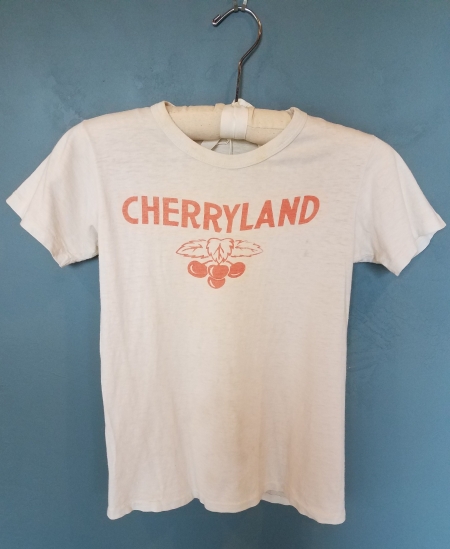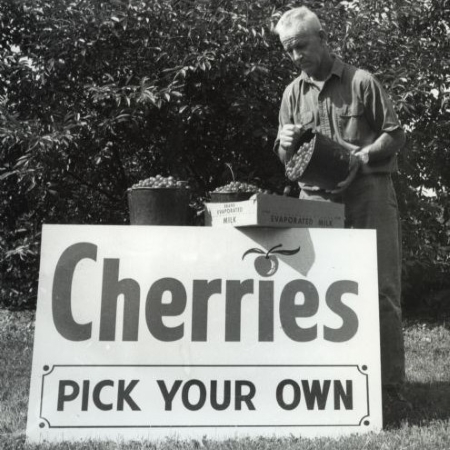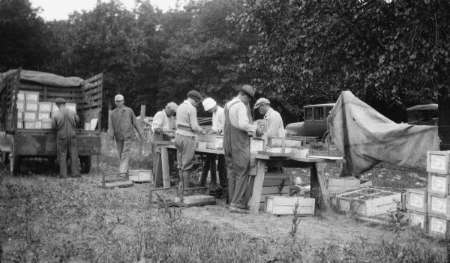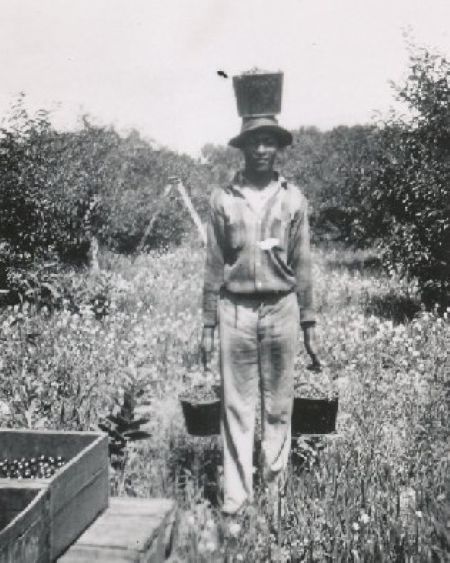
Emily Irwin is the Outreach Director and Curator at the Ephraim Historical Foundation in Door County. She previously worked at the Wisconsin Veterans Museum and the Wisconsin Historical Museum. Emily has a master’s degree in Historical Administration from Eastern Illinois University and a bachelor’s degree in history with a museum studies minor from Beloit College.
By This Author:

OBJECT HISTORY: Cherryland T-Shirt
This white t-shirt, decorated with “Cherryland” and a cherry design in red, was sold in the 1940s, and is part of the broader history of the cherry industry in Door County, Wisconsin. Marilyn Färdig wore the shirt as a child. Her name is written on a tag sewn inside the shirt.

Cherryland Tourism
The beginnings of Door County tourism preceded the cherry industry boom by several decades. As transportation improved, visitors from Chicago and Milwaukee regularly arrived in Door County via steamships. However, cherries provided a countywide marketing opportunity, and as the desirability of Door County cherries grew, so too did the idea to take advantage of the crop’s success through cherry tourism.

The Cherry Industry in Door County
While early European immigrants in Door County survived by subsistence farming, efforts in later years to grow cash crops proved challenging, due in large part to the area’s rocky landscape. Door County residents looked for a crop that could grow in shallow, rocky soil. The answer would come in the 1860s, with the unexpected success of fruit orchards.

Migrant Labor and Door County Cherries
Early Door County cherry orchards relied heavily on local workers, and all members of the family that owned a cherry orchard were expected to contribute. Door County residents like the Fardigs simply could not keep up with the workload. The answer to the labor shortage came in the form of migrant workers.